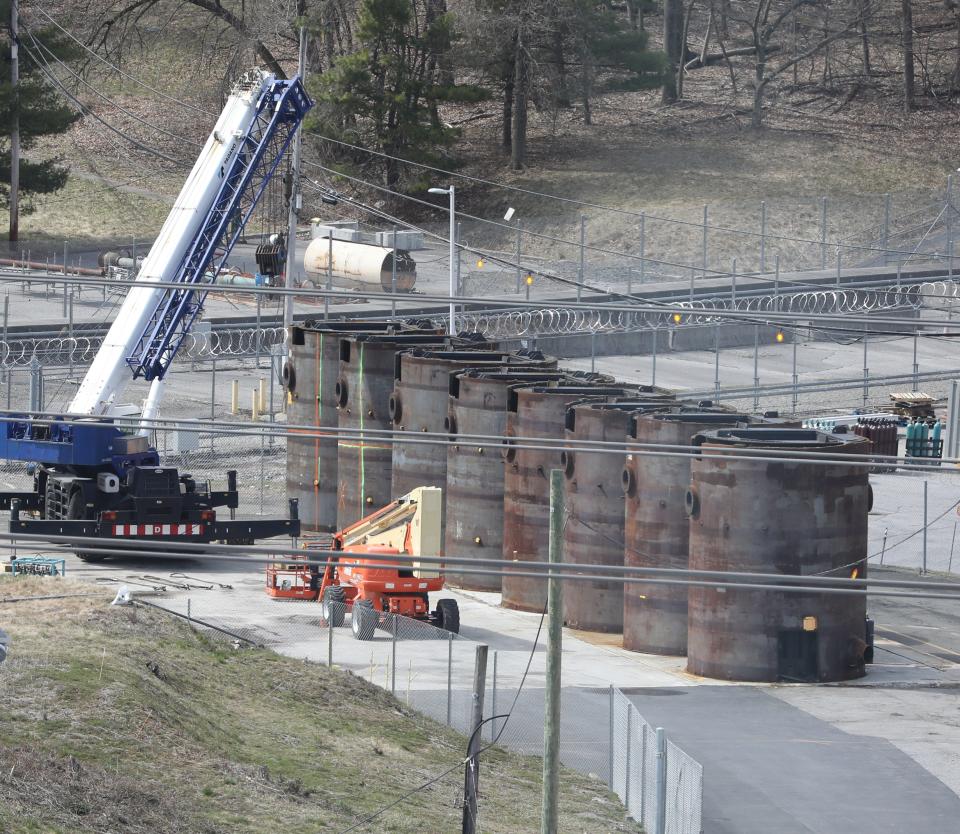Getting Indian Point's decommissioning right matters for Westchester's future | Opinion
- Oops!Something went wrong.Please try again later.
The Business Council of Westchester, the county’s largest business membership organization focusing on economic development and advocacy, continues to be laser-focused on Westchester’s changing energy landscape, including the decommissioning of the Indian Point nuclear site.
In 2021, Holtec, New York State, Westchester County, the Town of Cortlandt, the Village of Buchanan, the Hendrick Hudson School District, the Public Utility Law Project, and Riverkeeper collectively entered and supported a Joint Proposal to the Public Service Commission. This plan highlighted that Holtec's decommissioning plan would yield significant economic and environmental benefits to the surrounding community.

Despite the agreement, there has been considerable discussion and public concern at recent Indian Point Decommissioning Oversight Board meetings and community forums regarding the discharge of water from spent fuel pools at Indian Point, a practice that has been happening for more than 60 years and that experts consider to be safe for humans and the environment and is part of the decommissioning plan.
First, let us consider the facts. A recent presentation by the Indian Point Decommissioning Oversight Board's (DOB) independent technical expert, David Lochbaum, discussed the discharges of water into the Hudson River. He stated: "In 2019, total radiation body doses to the public from releases to the water were 0.000508 millirem from Units 1 and 2 and 0.0000812 millirem from Unit 3, for a total of 0.0005892 millirem, 0.00236% of the federal limit of 25 millirem." He added that: "Since 2005, the highest radiation dose to the public from radioactivity releases from Indian Point was 0.001947 millirem. A banana can emit 0.01 millirem, or five times the maximum dose from liquid releases from Indian Point."
This then begs the question: Why did the Cortlandt Town Board and Riverkeeper recently announce that they plan to hold a rally against "Holtec's plan to discharge a million gallons of radioactive spent nuclear fuel pool water [sic] into the Hudson River?”
Are there other options that do not involve discharge to the river? The short answer is yes. At the last DOB meeting, David Lochbaum outlined the four viable options for the water:
Discharge it to the river.
Evaporate and release it into the atmosphere.
Transport it to another state potentially posing an environmental justice issue.
Leave it onsite in hundreds of tanks to decay over time.
Lochbaum concluded that discharging the spent fuel pool water via the waste disposal system poses the least public risk. Cortlandt and Riverkeeper, however, want Holtec to store the water in tanks on site. And while this approach at first may seem reasonable, it poses a very significant problem. Retaining the water onsite would require storage in numerous tanks for an undetermined amount of time since it already meets safe-release standards. When would they release it? Additionally, the storage tanks would require vents to allow airflow. As a function of this requirement, there would be evaporation of radiological material into the air. This would all but halt the decommissioning plan and is contrary to the Joint Proposal and the Public Service Commission order that was agreed to by all parties.
By preventing the decommissioning process to continue as agreed to and proposed by Holtec, the potential redevelopment of the Indian Point site in as soon as a decade becomes impossible. This would be in spite Buchanan Mayor Theresa Knickerbocker’s stated desire to continue with safe discharge and redevelop the site as soon as possible.
The plant ran safely for over 60 years, and although nuclear power is making a revival as a clean energy source New York chose to push for closure. Holtec, the largest nuclear decommissioning company in the United States with former reactors in four states, has assumed the risk to help properly clean-up and reuse the site, based on good faith negotiations with all parties. It’s unfortunate that not all those parties seem to want to continue to allow decommissioning to proceed as planned, in a safe and scientifically based manner.
Redevelopment of the Indian Point site holds the potential to provide a huge economic development boom for the surrounding community, the county, and the region. To get to that point, however, we need to make sure that the decommissioning is done correctly, with public safety always the priority. The BCW believes that the only way that process can happen is if it’s guided by actual science and not misinformation and fear tactics. Let’s allow Holtec to work to complete the project according to state and federal permits and limits to ensure the property is once again an economic engine for Hudson Valley.
John Ravitz is executive vice president of the Business Council of Westchester.
This article originally appeared on Rockland/Westchester Journal News: Indian Point shutdown plan

